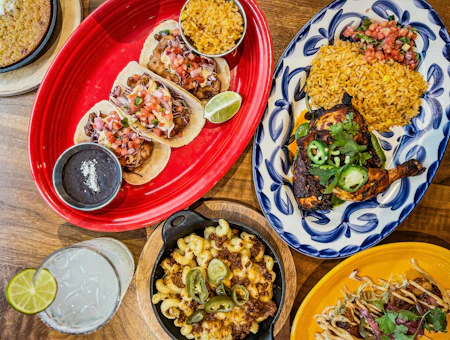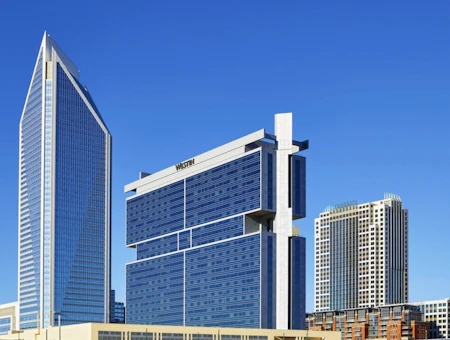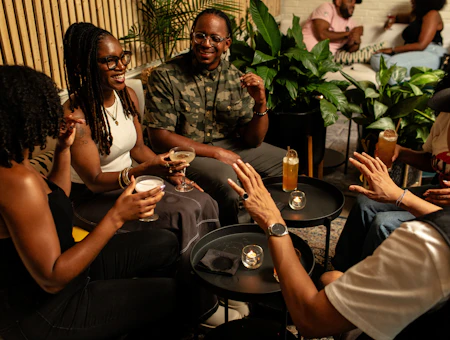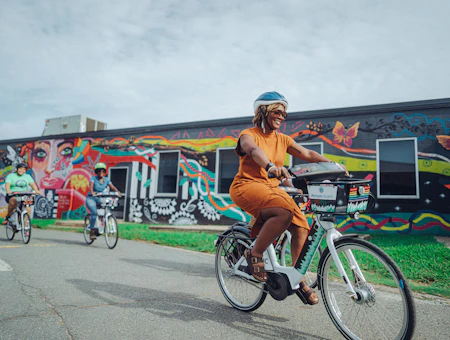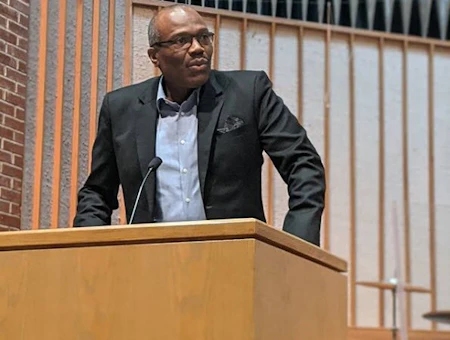Charlotte Untold Stories: A Neighborhood of Firsts
Thomas H. Wyche and the Legacy of Justice in Charlotte’s McCrorey Heights Neighborhood
by Winston Robinson
The Beatties Ford corridor of Charlotte’s historic West End stands as a vibrant hub of culture, resistance and resilience. Within it, the McCrorey Heights neighborhood stands as a beacon of leadership, activism and perseverance.
Often referred to as "The Neighborhood of Firsts," the quaint, unassuming community of roughly 170 dwellings – most of them custom-designed brick ranch-style houses – lining its grid of straight streets, McCrorey Heights has long been home to distinguished African American business professionals, educators, ministers, entrepreneurs and civil rights leaders. Among them was Thomas H. Wyche, a pillar of activism whose work in civil rights law positioned him as a key player in shaping the NAACP’s fight for advancement.
Mr. NAACP

Thomas H. Wyche was more than an attorney; he was a force for justice. A graduate of Johnson C. Smith University in 1940, then later Howard University Law School in 1944, he became a part of the national network of NAACP lawyers dedicated to dismantling racial segregation. His legal expertise was instrumental in key desegregation cases. In 1951, he joined forces with NAACP Southeast Regional legal counsel, Spottswood Robinson III, to represent 16 Black golfers in a legal challenge against the city-owned, whites-only Bonnie Brae Golf Course (now named Dr. Charles L. Sifford Golf Course in honor of the Charlotte native and first Black golfer to earn full membership in the PGA). Their efforts led the city of Charlotte to become more proactive in race relations, eventually integrating the course in 1957, marking a major victory in public recreational access.
Wyche’s commitment to civil rights earned him the nickname "Mr. NAACP" due to his deep involvement with the organization. He worked closely with NAACP state President Kelly Alexander Sr. (also a West End resident) in strategizing and implementing actions to combat racial discrimination in Charlotte. Wyche’s legal career also extended into education, where he was instrumental in school desegregation efforts both locally and nationally as his friend and colleague, Thurgood Marshall, led the landmark Brown v. Board of Education case. Wyche played a key role in Charlotte’s first school desegregation attempts in 1957, working behind the scenes to ensure legal protections for Black students entering previously all-white schools. His work continued throughout the 1960s, contributing to legal strategies that ultimately led to Charlotte becoming a model city for school desegregation through the Swann v. Charlotte-Mecklenburg Board of Education case.
Inheriting Keys to History: How a Home Became a Stronghold for Civil Rights

Wyche’s home, built in 1949, remains a physical representation to his enduring and endearing impact. Today, the residence is still in the family, occupied by his granddaughter Moriah. The continued stewardship of this home is more than just about keeping a house in the family – it’s about sustaining the very essence of McCrorey Heights as a bastion of prerequisite activism.
In 1967, recognizing the need for accessible legal services for low-income residents, Wyche helped establish Legal Services of the Southern Piedmont, further demonstrating his dedication to equitable justice. His contributions to civil rights were not only legal but also deeply personal. He and his wife, Grace L. Wyche, opened their home to NAACP lawyers and activists when they came to Charlotte to fight for justice.
As Charlotte continues to evolve, the importance of preserving historic neighborhoods like McCrorey Heights cannot be overstated. The neighborhood represents not only a physical space but also a living legacy of change agents, connected by courage and community. The presence of generational families like the Wyches ensures that the stories of nationally impactful activism, sparked from this small but mighty Westside neighborhood, continue to be told.
12 Places to Explore in the West End Block 3
McCrorey Heights is located within the “Block 3” zone at the intersection of Beatties Ford Road, Oaklawn Avenue and Booker Avenue. For those looking to immerse themselves in the West End’s rich history, Block 3 offers many unique, walkable historic landmarks to see. Here’s a guide to experiencing West End Block 3.
1202 Beatties Ford Road
A dynamic hub for Black women-owned businesses and creative entrepreneurship, this safe space houses Charlotte’s most sought-after creatives in tattooing, nail art and wellness.
Bite Your Tongue
Bringing the bold flavors of the Big Easy to the Westside, this eatery serves up authentic gumbo, po’boys and other Cajun comfort food delicacies. Experience a taste of New Orleans with every bite.
Booker T. Washington Mural by Georgie Nakima
Created by nationally acclaimed Afrofuturist artist and Northwest School of the Arts alumna, Georgie Nakima, this vibrant mural celebrates Booker T. Washington and the legacy of his neighborhood namesake, the Washington Heights community. Find this mural on a building at the intersection of Beatties Ford Road and Booker Avenue.
First Baptist Church West
Located at 1801 Oaklawn Ave., First Baptist Church West is the first house of faith designed by architect and former Charlotte Mayor Harvey Gantt. This campus exemplifies modernist architecture. Unique in its design, the entire facility was built without inside stairs, ensuring accessibility for all.
McCrorey Heights Neighborhood
Known as "The Neighborhood of Firsts," McCrorey Heights has long been a center of Black achievement and leadership in Charlotte. Founded by former Johnson C. Smith University President H.L. McCrorey, throughout the 1950s and ‘60s the neighborhood became home to trailblazers in education, law, medicine and civil rights. Many of its mid-century modern homes were designed by Black architects and, today, the neighborhood remains a symbol of progress, resilience and heritage.
Musical Harmony Mural by Abel Jackson
This mural, adorned on the side of a building at 1009 Beatties Ford Road, pays tribute to Charlotte’s legendary musical talents: John P. Kee, Fantasia Barrino and Anthony Hamilton. Their contributions to gospel, R&B and soul music continue to shape the city's cultural landscape.
Northwest School of the Arts
One of the region’s top performing arts schools, Northwest School of the Arts has nurtured talented artists and performers, including multiple Tony Award nominees. The mural project, featured boldly at the school’s entrance, was designed by Charlotte artist Rosalia Torres-Weiner.
Original Chicken & Ribs
Located at corner of Beatties Ford Road and Oaklawn Avenue, Original Chicken & Ribs is one of the last continuously operating businesses in listed in “The Negro Motorist Green Book.” This take-out restaurant is a historic culinary staple. The signature menu item, the “Fat Boy” burger, is world famous on the Westside.
The Ritz at Washington Heights
Once home to The Ritz Theater, a beloved movie house where Black Charlotteans gathered during segregation, this space has been transformed into a modern-day cultural hub. Thanks to a community-driven revitalization, The Ritz at Washington Heights now features outdoor seating, artwork and movie screenings, restoring its legacy as a place for connection, storytelling and celebration.
Stroud’s Flowers
A cornerstone of Charlotte’s Black business community for decades, Stroud’s Flowers provides stunning floral arrangements for every occasion. The florist’s legacy of quality and service makes the business a trusted name for celebrations, weddings and memorials.
Washington Heights Neighborhood
Established in 1910, Washington Heights is Charlotte’s first Black suburban neighborhood, located at the intersection of Beatties Ford Road and Booker Avenue. This historic community was home to Black professionals and educators. Named in honor of Booker T. Washington, it housed the only streetcar stop that served a Black neighborhood in the 1920s.
The Excelsior Club
Once a residential home, this historic venue underwent a significant expansion renovation, transforming it into the distinctive Art Deco exterior that stands today at 921 Beatties Ford Road. One of the most significant Black social clubs in the South, the Excelsior was the center of business, politics and entertainment. While the Excelsior Club is currently closed, the space still holds the stories of notable visitors such as Sam Cooke, Louis Armstrong, James Brown and Bill Clinton.



